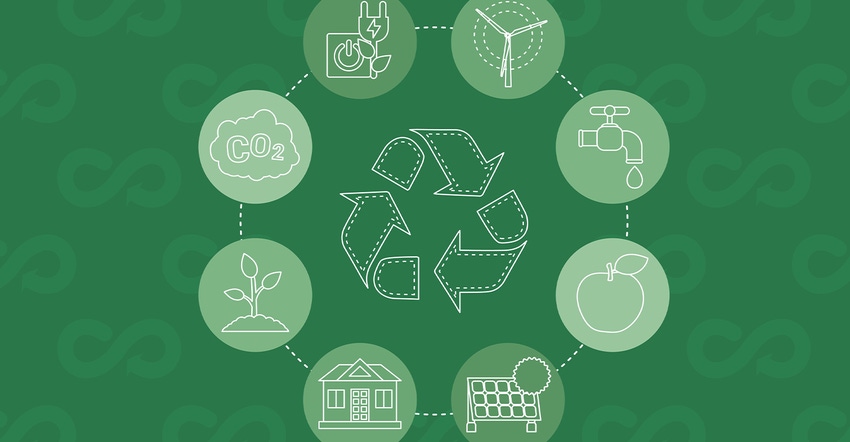How Materials Science Fuels Circularity
Transforming plastic waste and renewable waste (like used cooking oil and inedible plant waste) requires stakeholders across waste management, recycling, design, manufacturing, retail, brand ownership, public policy and consumer segments to work together. This web of interrelated services, technologies and products that transform plastic waste and renewable waste into useful materials is what we call the materials ecosystem

Consumers are setting the stage for circularity. According to Deloitte’s The Sustainable Consumer 2023 report, sustainability impacts consumer purchasing decisions more than it did a year ago. Sustainable packaging and products, and reducing waste, are the two practices consumers value the most today.
In response, many brands are recognizing the need for increased focus on product design. McKinsey has deemed the approach “driving triple wins”—improving sales, margins and sustainability by focusing on design.
So, how can brands design products—and packaging—to meet consumer demand, maintain high quality and boost sales? The answer lies in the materials ecosystem, which is fueled by innovation in materials science.
What Is the Materials Ecosystem, and Why Does It Matter?
Transforming plastic waste and renewable waste (like used cooking oil and inedible plant waste) requires stakeholders across waste management, recycling, design, manufacturing, retail, brand ownership, public policy and consumer segments to work together. This web of interrelated services, technologies and products that transform plastic waste and renewable waste into useful materials is what we call the materials ecosystem.
Consider, for example, the brands and manufacturers that are designing products and packaging for circularity. That’s a start, but materials scientists must also create new technology to help transform waste into new products; recycling infrastructure must enable the collection, cleaning and sorting of waste; policy must enable systems to scale and succeed; and, of course, consumers need the confidence that their efforts to return used plastic to the system will pay off.
How The Materials Ecosystem Helps Brands Deliver for Consumers
As a vital sector in the materials ecosystem, consumers transform the nature of waste through their purchasing power and recycling. The shift in consumer demand for sustainable options is revolutionizing the plastics industry as manufacturers seek out innovative approaches, technologies and partnerships to design for circularity. For example, New Energy Blue has developed a process for turning agricultural residue into biobased ethylene that Dow can then use in recyclable applications across packaging, transportation and footwear.
Industry experts are also focused on helping their customers—the brand owners looking to deliver on consumers’ demand for more sustainable products—to support recyclability and the use of recycled content. Dow, for example, designs packaging alongside customers at Pack Studios, where technology allows experts to quickly develop and test concepts for brands and prepare them for use. Pack Studios gives Dow the unique ability to bring all aspects of the plastics industry value chain together. Through this collaboration, brands can more quickly deliver sustainable flexible and rigid plastics innovations to meet the needs of a dynamic and demanding world.
Consider Kellogg’s Bear Naked granola as an example. The Bear Naked brand set out to develop packaging that would appeal to its primary audience of environmentally conscious millennials. The packaging needed to maintain the product’s high quality and compelling appearance while also delivering the recyclability that consumers demanded.
While the brand had already enabled consumers to ship its flexible pouches to a recycling facility, Kellogg’s wanted to make the process easier by enabling local store drop-off, but the packaging had to meet different materials criteria to qualify for store drop-off recycling. After a lot of trial and error, Kellogg’s approached Dow. Dow collaborated with plastic packaging manufacturer Berry Global to incorporate its expertise and innovative film technology while adapting its own technologies to Bear Naked’s packaging needs.
The result? Dow, Berry Global and Bear Naked’s 18-month collaboration led to a pouch that is suitable for store drop-off recycling in the U.S., exceeds barrier requirements and improves the granola’s shelf life.
How Does It All Add Up to a Circular Future?
For starters, when materials science experts help brands create products and packaging that can feed into a circular ecosystem, it fuels consumer purchasing power and pushes competing brands to step up to the sustainability plate. What then becomes clear is this: Brands that aren’t designing for sustainability will fall behind.
As more brands commit to designing products and packaging that can be recycled, they will feed more supply into the circular economy, enabling it to function at a larger scale. And as materials science experts and other stakeholders across the value chain commit to driving circularity from design to disposal and then back to design again, all parties come together to close the loop.
At Dow, this idea of the materials ecosystem guides our systems approach to considering the actions we take and partnerships we make all along the value chain. We aim to first understand local systems around plastic waste, then collaborate with the best partners and technologies for the collection, reuse and recycling of waste to help global materials ecosystems scale. This is how we will keep used plastic out of the environment and in the circular economy.
About the Author(s)
You May Also Like




